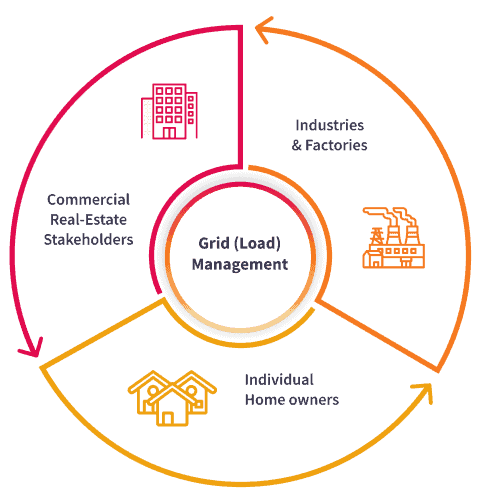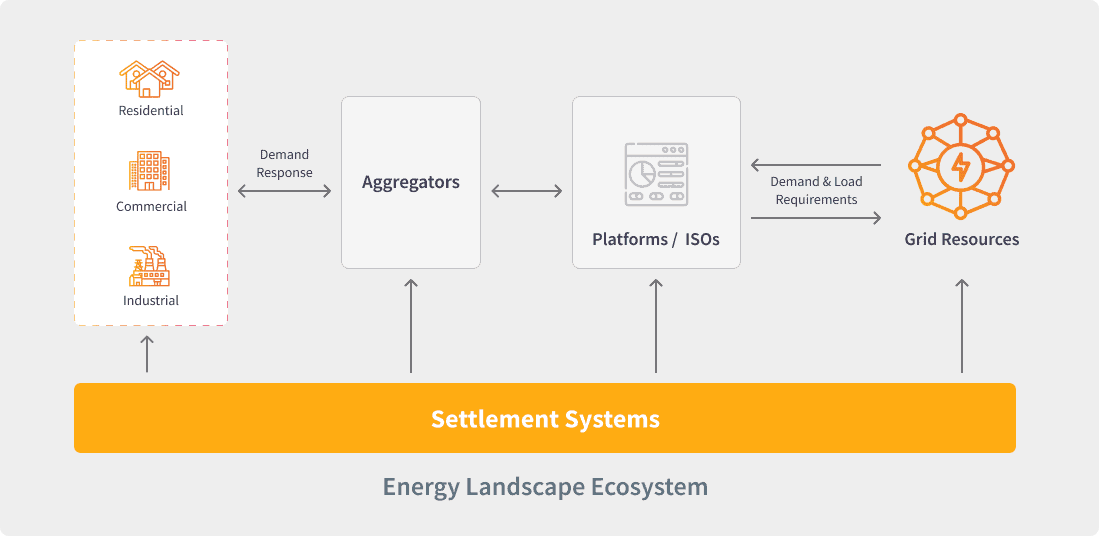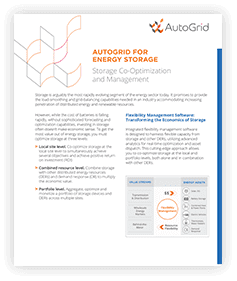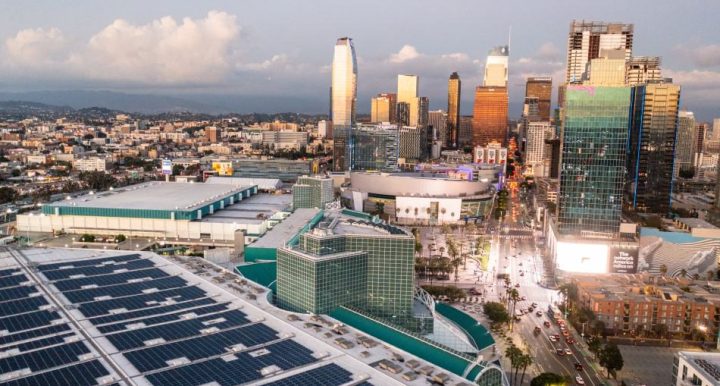Over the next several years, today’s electricity energy landscape will transform into a much more interactive, participatory model.
“Resources both on the supply and demand side will work together in a complex dance to meet the electricity needs of the public, while providing reliability and increasing renewable energy.”
What will this dance look like on a daily basis? Let’s fast-forward to a summer day in the not-too-distant future…
Monday’s Operations
Touseef is a software engineer who has the option of working at home or in his office downtown. Today is Monday, and this morning Touseef has chosen to work from home so he can keep an eye on his precocious toddler daughter. He gets a text from AKB, a residential distributed energy aggregator that has incorporated Touseef’s and other residences into a Virtual Power Plant. The text tells Touseef that this afternoon there is a likelihood of high prices in the wholesale market and asks him whether he would like to opt-in to participating as a distributed energy provider. Touseef has a central air conditioning unit, a solar array, and a wall-mounted battery, a control-enabled hot water heater, and has contracted with AKB for the previous two years. Participation usually means allowing the air conditioning thermostat to be raised up a few degrees, delaying heating of water, and making the energy in his battery available. Today, Touseef plans to take his daughter to visit grandparents all afternoon.
“His comfort will not be affected by the grid event, so he opts-in using the link in the text.” Tomorrow, he will be home all day with his daughter, so he may choose to opt-out if asked again.
Rhonda is the energy manager for three hotels in the downtown area. Last year she negotiated a contract with the utility to enable demand response of her hotels through HVAC control (so long as there is a 5-hour notification), as well as use of the backup generator at one of the facilities when prices reach a pre-set level. She receives a message from the utility offering three options to participate in today’s event: No participation, HVAC only, and HVAC + backup generator deployment. “Rhonda chooses the maximum participation level – in the past these events have been lucrative for her company.”
David is the operations manager for an air liquefaction plant in the city. His facility uses huge pumps, compressors, and chillers for liquifying and separating liquid nitrogen, liquid oxygen, and other gases for industrial customers throughout the region. Because his operation has some flexibility in timing of certain processes, he is able to offer ancillary services into the electrical grid in the form of Responsive Reserve. “Officially, his facility is a Load Resource, meaning he can reduce load based on a signal from the Independent System Operator, which has the same effect to the grid as throttling-up a power plant.“
This morning David’s message from the utility was that his facility will be carrying 9 megawatts of Responsive Reserve from the hours of 1200 to 2400. David has a total of 15 megawatts of controllable load, so David lets his operations teams know of the 9 MW obligation, and discusses the 6 MW of discretionary load reduction capacity they have. They review plans for the automatic shut-down of a specific set of pumps and motors within the ISO’s 10-minute requirement so as to achieve the 9 MW of demand reduction. They further review which other equipment beyond this that could be shut down if prices spike upwards during the day.
Greg runs the Real Time desk at the Independent System Operator (ISO). His group has been in contact with the entire market, confirming and re-confirming today’s forecast and expected resource position. Morning demand has been strong but not enough to strain the grid, and prices were moderate. The forecast is for clear skies and very high temperatures. Greg knows there will be a glut of power in the middle of the day from thousands of solar installations in the region, but that the grid will be extremely tight across the evening hours.
For most of the day prices are low, and most energy storage facilities are charging to full capacity. Thermal generating plants are at idle or shut down. Greg and his team watch the situation closely, however, to ensure they are ready for the evening peak. As the sun marches down the sky, solar output decreases. Greg’s control systems signal prices to increase across the grid to maintain balance. Power plants with low marginal costs begin to ramp up in step with the ascension of prices. At the utility and aggregator level, signals are sent to retail customers to pre-cool their houses in anticipation of raising thermostats later in the day. Touseef’s thermostat clicks down three degrees in response.
Soon, as families return home from work and school, demand increases sharply. Solar production falls, so prices move upwards rapidly, and thermal units respond. At a certain price point, utilities and aggregators across the region relay instructions for HVAC systems to conserve. Touseef’s thermostat clicks up six degrees, and Rhonda’s three hotels raise cooling settings to higher levels. Prices rise more, and Rhonda’s generator kicks on sending power back into the distribution system. Large and small energy storage systems begin to discharge as their trigger points are met. High-cost thermal “peaking” resources (combustion turbines) start up and tie into the grid.
Greg’s office is intense but calm. His team has been here before, and they have the tools to meet today’s challenges. According to his models, there is still an hour left before demand will “turn”, and decline as the day cools. Wind power is expected to ramp up several hours from now, but not soon enough to help with today’s peak.
Suddenly an alarm sounds: a combined cycle plant has tripped off-line. Because of the loss of generation, system frequency drops. Before Greg or his team can react, however, his systems have already called for deployment of Responsive Reserve in the region. Power generation units that are carrying Responsive Reserve ramp up to maximum level. David’s operations supervisor at the liquification plant receives the message directly from the ISO and immediately initiates the shut-down of several pumps and motors to meet their 9 MW Responsive Reserve obligation. Other resources in the region deploy, including several energy storage facilities, several aggregated residential storage resources, and a handful of backup generators located at industrial locations and data centers. Other loads with interruption contracts are shut down, and a number of micro-grids in several cities isolate themselves from the grid. David watches wholesale prices spike on his smart phone, as calls his operations supervisor: “Shut down the rest of the equipment as we planned.”
Supply and demand are back in balance at this point, but due to the tight reserves, prices remain very high for over an hour. Evening brings cooler temperatures, though, and demand slows, allowing prices to fall. Emergency generators shut off, battery storage facilities curtail discharge, and some Load Resources like David’s are released of their obligations. HVAC system settings resume normal levels and micro-grids re-connect with the distribution system. By the time Greg’s team hands over the control room to the night shift, wind generation is strong, thermal units are at lower levels, and prices are back to normal levels.
The next day, Touseef receives a text from aggregator AKB letting him know that his participation in the previous evening’s pricing event has earned him a bill credit of $7. Rhonda proudly shows her boss the settlement of the previous day’s activities. David’s liquefaction plant has also earned a sweet payday – not only did they earn a premium on the Responsive Reserve capacity; he was paid for the avoided energy based on Real Time prices. All three customers receive a message regarding today’s participation as well, and the cycle begins again.
Summary
In the above vignette, we’ve seen full cooperation and interconnection between the utility, an aggregator, the ISO, thermal generation resources, and distributed resources (both load-based and generation-based), acting in concert to meet the energy needs of the grid. Both electricity demand and supply swing drastically through the day. Many different technologies are called upon to balance these elements in a seamless, dynamic environment. Reliability of the grid is maintained, customers receive the power they need, and suppliers are fairly compensated for services provided. Granted, this is a simplified example.
“The future landscape will involve thousands of residential and commercial customers using many different aggregators and systems to present their demand response and distributed energy capacity to the market.”
A multitude of control platforms will be in use to ensure control and data flow up and down the chain. Sophisticated dispatch and settlement systems will be necessary to deploy and compensate the players.
How far in the future is this scenario? Not far. In fact, many of the elements described above are already in operation in various markets. Trends in the market point to this complex picture of the future, filled with new and different business models and opportunities for innovation.








